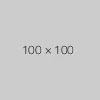Google’s foray into the burgeoning field of AI-driven image generation with its ImageFX tool presents a mix of innovation and challenge. Positioned as a free alternative in the text-to-image AI market, ImageFX offers users the opportunity to experiment with generative art without financial commitment. However, the tool’s performance reveals a spectrum of capabilities, underscored by significant limitations that might deter users seeking precision and versatility in their creative endeavors.

Google ImageFX, leveraging Google’s Imagen 2 model, promises to transform text prompts into visual content. This ability to synthesize complex ideas into images holds immense potential, particularly for creators, educators, and marketers. My testing of ImageFX alongside competitors such as OpenAI’s Dall-E 3 and Adobe Firefly provided a comparative perspective on its effectiveness and revealed its distinct strengths and weaknesses.
One of the notable advantages of ImageFX is its cost-free access, which democratically opens up AI image generation to a broader audience. Users can explore their creative ideas without the barrier of subscription fees-a compelling feature, especially for casual users and those new to AI tools. Additionally, ImageFX can occasionally produce strikingly realistic and visually engaging images, which are impressive given the tool’s free status.
However, the experience of using ImageFX is marred by several drawbacks. The tool often struggles with rendering human figures accurately, resulting in distorted anatomical features that can detract from the overall quality of images. This issue is particularly problematic when precision and realism are required, making ImageFX less suitable for professional use where detail and accuracy are paramount.
Moreover, Google’s stringent filtering system frequently blocks innocuous prompts, citing policy violations. This overzealous moderation not only frustrates users but also stifles creativity, as the process of trial and error to bypass filters can be time-consuming and disheartening. The lack of transparency in what triggers these rejections adds an additional layer of complexity, potentially alienating users who may opt for less restrictive platforms.
ImageFX’s limitation to producing only square aspect ratio images further restricts its utility. In a digital landscape where aspect ratio can significantly impact visual storytelling and audience engagement, this constraint might deter users who require flexibility in their creative outputs.
Despite these challenges, ImageFX does have moments where it excels. The tool performed remarkably well in generating abstract and conceptual images, such as a lightbulb made of spaghetti, which showcased its potential for whimsical and creative interpretations. Such successes highlight the tool’s capacity for novelty, which can be particularly appealing in contexts that value originality and innovation.
In conclusion, Google ImageFX stands as a testament to the potential and pitfalls of AI-driven image generation. While it offers a valuable entry point for individuals exploring this technology, its practical application is hindered by significant limitations. As Google continues to develop and refine ImageFX, there is hope that future iterations will address these issues, enhancing the tool’s reliability and broadening its appeal. For now, users must navigate the balance between ImageFX’s creative possibilities and its constraints, making the most of what is freely available while managing expectations about the tool’s current capabilities.

